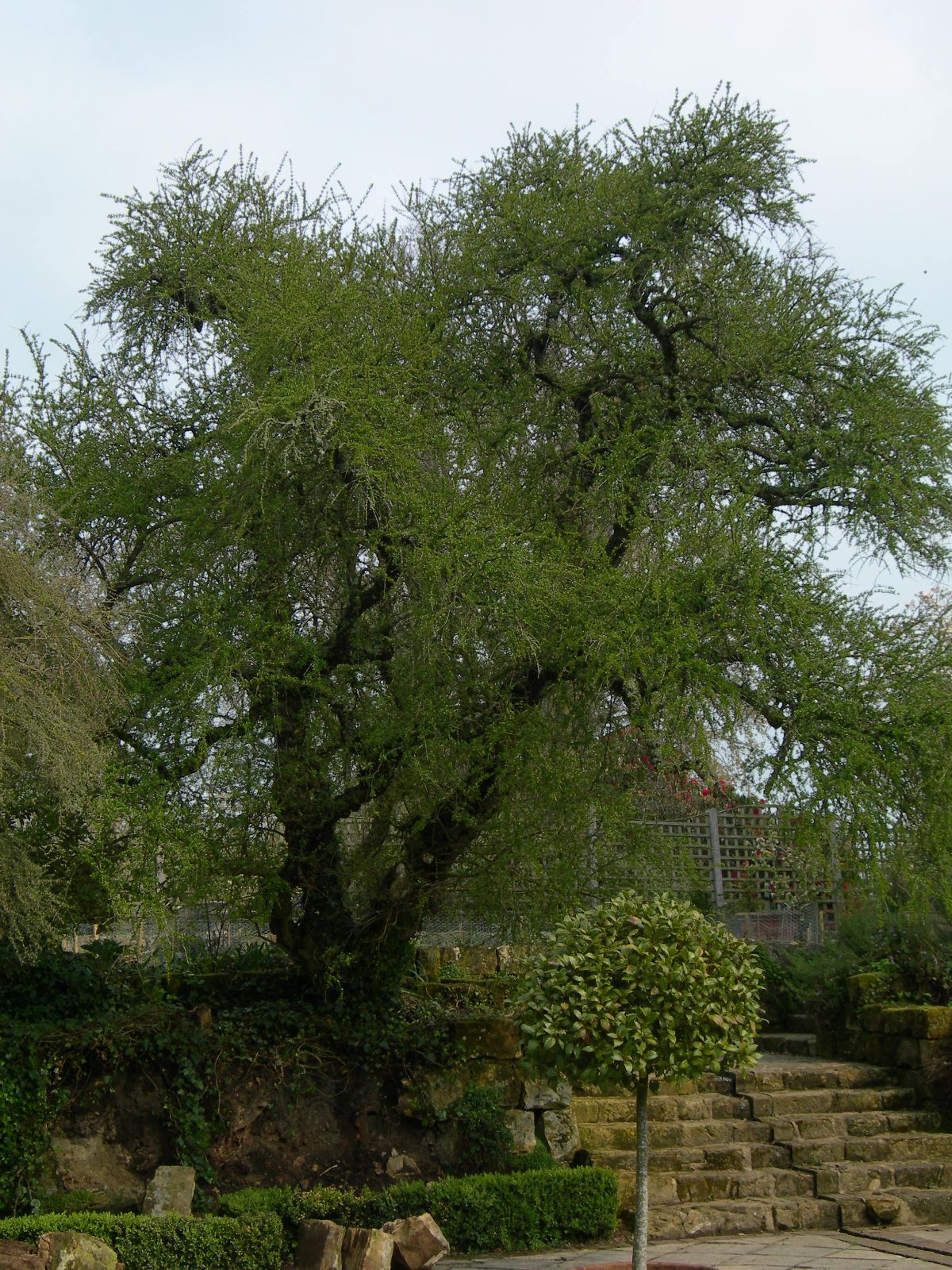Discaria discolor
Credits
Article from Bean's Trees and Shrubs Hardy in the British Isles
Recommended citation
'Discaria discolor' from the website Trees and Shrubs Online (treesandshrubsonline.
Genus
Synonyms
- Colletia discolor Hook.
A deciduous shrub 4 to 6 ft high and as much as 8 ft in diameter, with the main branches sometimes prostrate, nearly or quite glabrous in all its parts, the branchlets opposite and often ending in a spine. Leaves opposite, elliptic or elliptic-obovate, tapered at the base, rounded or notched at the apex, toothless or shallowly toothed; 1⁄6 to 3⁄4 in. long, 1⁄4 in. wide; stalk very slender, 1⁄12 in. or less long. Flowers produced in clusters of two or three at each leaf-axil, each on a slender stalk 1⁄8 to 1⁄6 in. long. Corolla absent; calyx white, bell-shaped, 3⁄16 in. long, not so much wide, with four triangular lobes. Fruit consisting of three dry, globose lobes, each containing a seed.
Native of the Andes of Argentina and Chile, up to elevations of 2,700 ft. It was first called Colletia by the elder Hooker in 1843, from specimens collected by Capt. King at Port Famine (Fuerte Bulnes), on the Straits of Magellan. Introduced by H. F. Comber during his Andean travels, 1925–7, under three numbers, viz., 722, 766, and 794. The last he described as a ‘good weeping form’; No. 766 as the best. It is a handsome shrub producing an amazing profusion of blossom, which is sweetly scented and borne in May and June. As it is found wild on hot, rocky sites it should be given a well-drained spot, as sunny as possible. It is quite hardy in mid-Sussex, but rarely seen outside those gardens in which it was raised from Comber’s seed.

